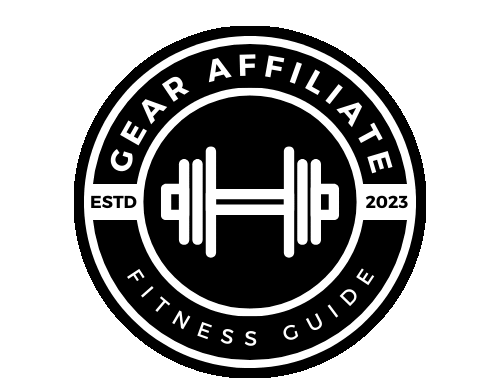
Table of Contents
Understanding Lifting Belts: Purpose and Function
Lifting belts are a common accessory in strength training, playing a critical role in enhancing performance and safety during heavy lifts. Their primary purpose is to provide support to the lumbar spine and promote intra-abdominal pressure, which contributes to greater stability throughout the core. This added support can help lifters maintain proper posture, reducing the risk of injury, especially when engaging in high-intensity workouts or lifting significant weights.
When a lifter dons a lifting belt, they create a compressive force around the abdomen. This increases intra-abdominal pressure, which acts like a pneumatic brace for the spinal column. The power generated by this pressure can enhance stability and help maintain proper spinal alignment during lifts, such as squats or deadlifts, where the lower back is particularly vulnerable. The belt serves to engage the abdominal muscles more effectively, allowing for a safer and more effective lifting technique.
From an anatomical perspective, utilizing a lifting belt engages various muscles, including the rectus abdominis, obliques, and transversus abdominis. These muscles work together to create a solid foundation for the spine, helping to prevent excessive flexion or extension that can lead to strain or injury. Moreover, many lifters find that wearing a belt allows them to lift heavier weights, thus promoting muscle hypertrophy and strength gains.
In essence, lifting belts function as a valuable tool for individuals serious about strength training. They can assist in improving technique and performance, while simultaneously safeguarding the lifter’s back. By understanding the purpose and function of lifting belts, athletes can make informed decisions about when to incorporate them into their training regimens, thereby maximizing their effectiveness during workouts.
Benefits of Using Lifting Belts
Lifting belts have been a point of discussion among strength athletes and recreational lifters for many years. Their primary benefits become particularly evident during heavy compound lifts, such as squats and deadlifts, where the physical demands are greater. One of the main advantages of using a lifting belt is the potential for increased lifting capacity. A belt provides support to the lower back and core, allowing lifters to engage more muscle groups effectively and lift heavier weights than they might be able to do unaided.
Improved stability is another significant benefit. The belt acts as an external support structure, aiding lifters in maintaining proper posture and positioning throughout their lifts. By providing additional intra-abdominal pressure, lifting belts help stabilize the spine and pelvic region, thus contributing to more efficient force transfer during lifts. This stabilization is crucial in preventing poor body mechanics that could lead to injuries, especially when handling near-maximal or maximal loads.
Injury prevention is a critical concern for all lifters, and research suggests that lifting belts can be advantageous in this regard. Studies indicate that wearing a belt can reduce the risk of lower back injuries by maintaining proper alignment and limiting excessive movement during lifts. Experts in strength training affirm that a well-fitted lifting belt can enhance performance, especially for athletes involved in competitive powerlifting or strength sports. While casual lifters may not need a belt for every workout, those attempting to push their limits can benefit from the enhanced safety and support a lifting belt provides.
Ultimately, the advantages of using a lifting belt are clear; they not only support increased performance and stability but also play a vital role in injury prevention for both serious athletes and dedicated recreational lifters alike.
Common Misconceptions About Lifting Belts
There exists a range of misconceptions surrounding the use of lifting belts, leading many individuals to form incorrect assumptions regarding their effectiveness and necessity. One prevalent myth is that wearing a lifting belt can weaken your core muscles. This belief stems from a misunderstanding of how belts function. Rather than replacing the need for core strength, a lifting belt can actually promote greater intra-abdominal pressure, allowing athletes to engage their core more effectively during heavy lifts. This enhanced support can, in fact, complement core training rather than detract from it.
Another misconception suggests that lifting belts are only suitable for advanced lifters. While it is true that more experienced athletes often utilize belts during maximal lifts, this does not mean that beginners should avoid them entirely. For novice lifters, who may benefit from additional support as they learn proper lifting techniques, using a belt can provide safety and confidence during their training. A lifting belt can help in building good habits while progressively increasing strength.
Additionally, some believe that one should wear a lifting belt for every exercise performed in the gym. This is misleading; not every lift necessitates the use of a belt. It is recommended that belts be reserved for maximal or near-maximal lifts, such as heavy squats or deadlifts, where the risk of injury is heightened. For lighter weights or accessory movements, relying on natural body mechanics and proper form is typically sufficient. Understanding when and how to utilize a lifting belt is paramount for optimizing its benefits in a training regimen. Through a balanced approach, lifters can enhance their performance without succumbing to common myths surrounding lifting belts.

When to Use and When to Avoid Lifting Belts
Lifting belts can be a useful tool for certain situations in strength training, primarily for exercises that place a significant load on the spine, such as squats and deadlifts. For advanced lifters, incorporating a lifting belt can enhance performance, providing additional abdominal pressure and spinal support during maximal lifts. This additional support is particularly beneficial when attempting heavy lifts that approach one’s one-repetition maximum (1RM), as it may help prevent injury and improve overall stability. Furthermore, individuals in competitive strength sports often utilize lifting belts as part of their training regimen, as they play a crucial role in maximizing lifting capacity and ensuring technique retention under heavy loads.
Conversely, beginners should approach the use of lifting belts with caution. For those new to weightlifting, focusing on learning proper lifting techniques and building core strength without external aids is essential. Beginners may benefit more from developing a strong foundation of stabilizer muscles, which can ultimately enhance their lifting capabilities in the long run. Introducing a lifting belt too early may lead to over-reliance on the support, potentially weakening the core and hindering overall progress.
Additionally, there are specific exercises where lifting belts may be unnecessary. Movements such as bench presses or overhead presses typically do not require a lifting belt, as the load on the spine is not as significant. It is also advisable to avoid using a belt during lighter lifting sessions or for higher repetitions, as these scenarios often require mobility and flexibility, which could be compromised by a belt. When using a lifting belt, ensure that it fits snugly around the waist, allowing for some movement while still providing adequate support. Ultimately, the decision to use a lifting belt should be guided by experience level, exercise type, and individual comfort and safety considerations.
Check Out Our Recommendation for a Weightlifting Belt
If you found this post to be helpful, then you may be interested in the rest of our blog page here.
At Gear Affiliate, we always want to give our readers more resources to research. Below are a few sources that we have found to be helpful relating to this topic.


